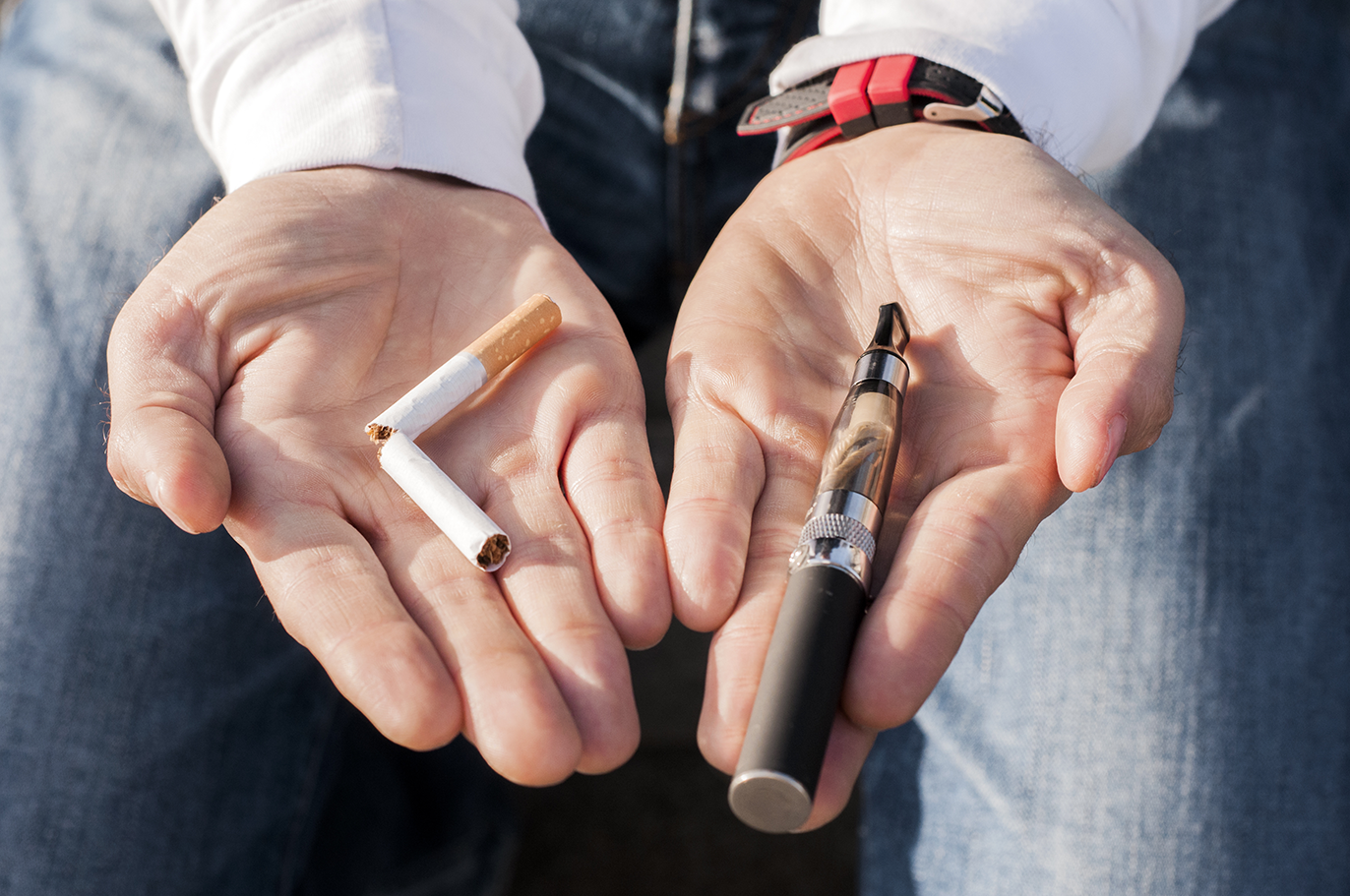
According to this year’s Annual National Youth Tobacco Survey, about 1 in 10 adolescents currently use electronic cigarettes, also known as e-cigarettes or vape pens. With vaping becoming more popular with younger folks, the Food and Drug Administration (FDA) cites e-cigarette use among youth as a top concern. Here’s what you need to know about vaping versus smoking traditional tobacco products.
What are e-cigarettes, and how do they work?
“E-cigarettes are devices that produce an aerosol by electronically heating a liquid containing nicotine, artificial flavors and other chemicals,” said Charles Shieh, M.D., thoracic surgeon and director of Lung Cancer at Inspira Health. “Many e-cigarettes look like regular cigarettes or other smoking devices, but they can also look like everyday items such as pens and flash drives.” Vaping is the process of inhaling the aerosol produced by the e-cigarette.
What are the health risks of using e-cigarettes?
The aerosol produced by e-cigarettes contains many harmful substances, including nicotine, cancer-causing chemicals, heavy metals, ultrafine particles and other chemicals linked to lung disease. Nicotine is highly addictive, detrimental to adolescent brain development and can damage a developing baby’s lungs and brain. E-cigarettes can also result in unintended injuries, often due to defective batteries catching fire or exploding while charging.
Are e-cigarettes safer than regular cigarettes?
“Tobacco smoke contains more than 7,000 chemicals, hundreds of which are toxic and approximately 70 of which are linked to cancer,” said Dr. Shieh. “Although e-cigarette aerosol contains fewer toxic chemicals than cigarette smoke, it is still not safe.” While some e-cigarette product labels claim to be nicotine-free, a study found that 99 percent of e-cigarettes sold in the United States contain nicotine.
Can e-cigarettes help me quit smoking?
Many manufacturers market e-cigarettes as a tool to help you quit smoking, but the FDA has not approved them as a smoking cessation aid due to insufficient evidence. Recent studies show that most people who try e-cigarettes to help them quit regular cigarettes end up continuing the habit with both products.
Why is nicotine especially harmful to adolescents and young adults?
“Nicotine can negatively impact adolescent brain development and affects the formation of brain synapses,” said Dr. Shieh. “Adolescent nicotine use also affects the parts of the brain responsible for learning, attention, impulse control and mood.” Studies suggest that adolescents who use nicotine may be at increased risk for future addiction to other substances.
How can I help my child stop using e-cigarettes?
Avoid lecturing, and instead, encourage honest conversation with your child where you each can share your concerns about smoking. You can also set a good example by being a tobacco-free home. Reach out to your child’s doctor for resources and support. When you’re ready to kick the habit, help is available. Inspira’s Quit Center co-facilitates a statewide Youth Quit Group with Atlantic Prevention Resources, offering free virtual services for teens who want to quit smoking and vaping. The program is led by certified tobacco treatment specialists and can double your chances of successfully quitting. Click to learn more about Inspira’s smoking cessation services.
Inspira Health is a high reliability organization (HRO), which means safety is the top priority for patients and staff. To make an appointment, call 1-800-INSPIRA.
